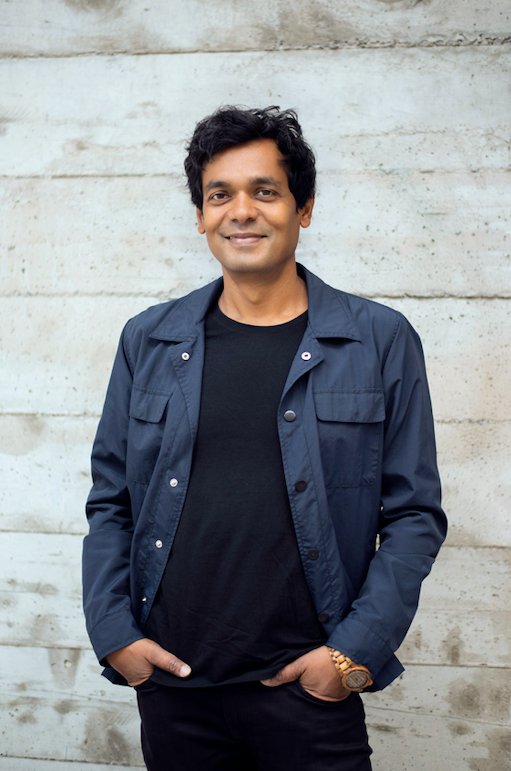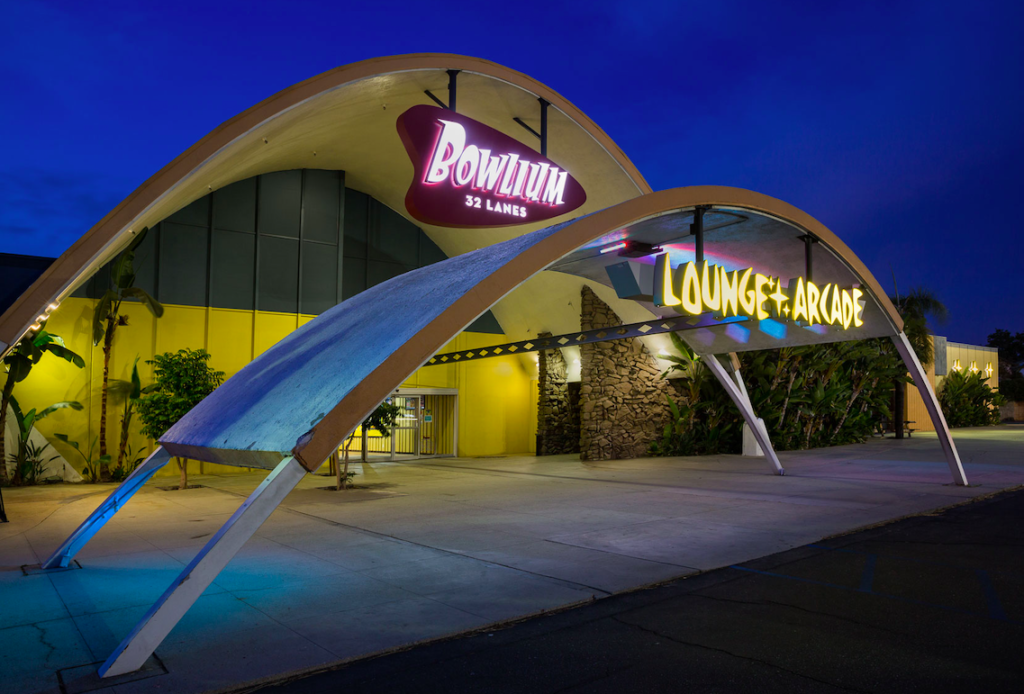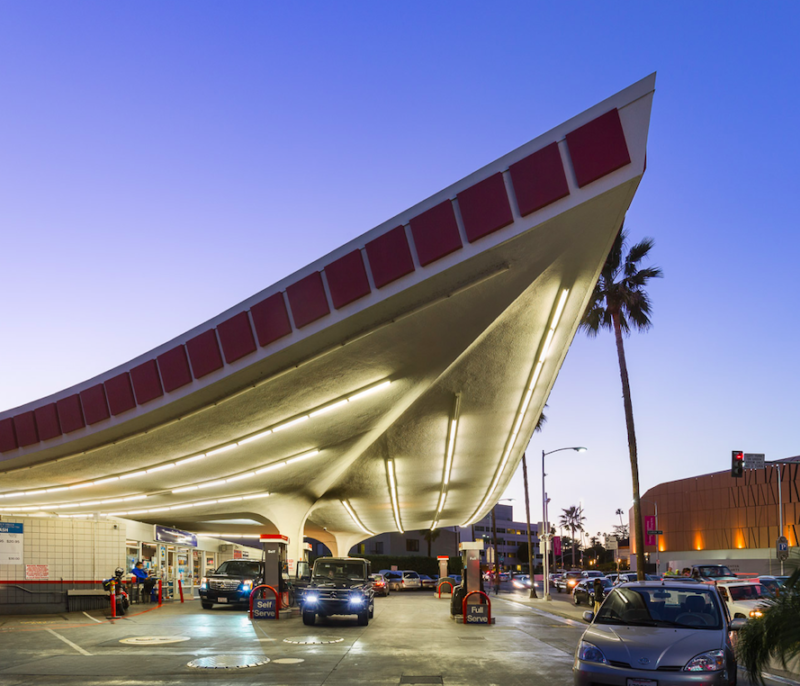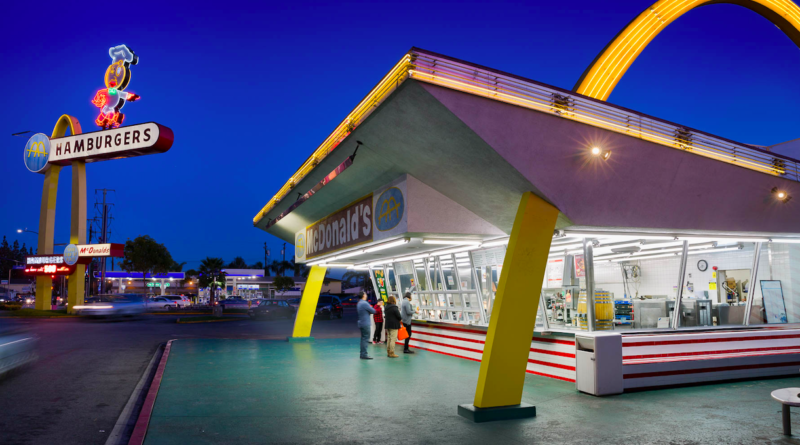INTERVIEW: New book ‘Gas and Glamour’ celebrates roadside culture in L.A.
Photo: America’s oldest surviving McDonald’s, dating back to 1953, is one of the pictures featured in Gas and Glamour. Photo courtesy of Ashok Sinha / Provided with permission.
By day, Ashok Sinha is an architectural and fine art photographer who has amassed a healthy list of clients and commissions. By night, he’s a man on a mission: to find remnants of car culture, neon signs and unique architectural wonders. One of his favorite places to scope out these nightscapes is Los Angeles, a city he has been visiting on and off for many years. His efforts have paid off with a new photo book called Gas and Glamour, out now from Kehrer.
“I’ve been going to L.A. for a long time,” Sinha said in a phone interview earlier this year. “I go there quite a bit. I have family there, and I am a big car guy. L.A. being the true capital of car culture always attracted me. It’s a different lifestyle than in New York, of course, and generally I’m attracted to that car culture idea. But as an architectural photographer, I’ve always been noticing the design of buildings and how they were built a certain way, and I kind of started this research around 2015. I got more interested. There’s got to be a reason why these buildings are built in a certain way.”
Sinha said that when he drives down a block in L.A. — it could be any block — there’s always that one building that catches his attention. Perhaps it’s the retro signage, or the design of the building, or the topography of the location’s layout.
“The more and more I looked into it I started to find a thread between all these buildings because they were essentially built to attract the attention of driving motorists, just like I was,” he said. “I found this whole other lost design history of Los Angeles, so to speak, and it was very interesting. Personally to me it was going on a journey in the city, looking at it in a whole different perspective and discovering places which normally I would never know about, or the history and legacy of the city and how fascinating it was in the mid-century when the suburban expansion was happening in the Eisenhower era. It was so exciting to see these things happening in the urban design and the planning of the buildings.”
He has many fascinating selections in his book, including Pann’s Coffee Shop, which promises “real food” and has been around since 1958. Its triangular roof is slanted upward toward the skies, with palm trees framing the property. Another classic is Randy’s Donuts, with a giant donut atop a rectangular building with walk-up and drive-thru windows surrounding it on all sides. The Ritz Motel, along North Hollywood’s Lankershim Boulevard, has decorative diamonds along its roof, almost like an architectural necklace, fronted by a neon “Ritz” sign and an advertisement for HBO. For Sinha, these postcards of yesteryear needed to be photographed in the early evening.
“I deliberately wanted to photograph them at that time of the day, even though it was challenging from a production perspective,” Sinha said. “To me, the story of these buildings was not only the design, but also the neon played a big role in how these buildings presented themselves on the roadside. So it had to be done, I believe, at that time, so it gave a complete picture. As a side note, I think it also became a nod to that era, to that passing era. You’re looking at end of day, going into night. It was a subtle nod to an era that was a different time, but we’re seeing it in the present day.”
It was important to Sinha not to capture these buildings as rusting, abandoned locations that are now gone. They are open, and in some cases thriving, businesses that continue to light up the skies of Los Angeles on a nightly basis. That means Sinha’s shots have a retro look in the background and modern-day cars in the foreground. They serve as a combination of styles and time periods.
“I deliberately photographed these buildings with present-day cars visible in the scene, so at one glance you might think, oh my God, this must be from how many years ago,” he said. “But then you look around. Wait, I recognize this modern-day stuff. I wanted to show that juxtaposition and bring these icons to today.”
When Sinha set up his equipment, he naturally attracted some curious people who wanted to know about the project he was working on. Once he had some images in the bank, he was able to show them his work, his plans and his goals to any interested passerby (and any owner of a property who had doubts about being featured in the book).
“I had to be very nimble,” the photographer said about the project. “I had to plan ahead quite a bit given that I was making specific trips to the West Coast. By the way, I could only make one image every time I went out to shoot because of the timing. I would pre-scout the location using say Google Street View just to figure out where I could be, but then most of the time I realized I would have to be in the middle of a street or something like that. It was just not possible, although there were times where there would be this divider in the middle, and I would squeeze myself onto it. I don’t recommend it, but sometimes you have to get the shot — if it’s the right spot and it’s safe enough to put your construction vest on to stay visible.”
He added: “I do set up a tripod, so it’s not a quick grab and shoot. … I use special perspective corrective lenses, so there are multiple shots that are combined to make the final image. There were a couple properties for sure I had to go back and forth with the owners to convince them that I’m doing a project and I’m serious about it. … I purposely took my time to set up the gear. Sometimes people come out and say, ‘Hey, I notice you’re setting up. What are you working on?’ They’d be very friendly. They’d be curious, and then sometimes a lot of times they would be surprised about the history of their own buildings. ‘Do you realize this is such an important part of the city, and why this is interesting to me?’ They’re like, ‘Wow, this is really cool.'”
By John Soltes / Publisher / John@HollywoodSoapbox.com
Gas and Glamour by Ashok Sinha is now available from Kehrer. Click here for more information.




